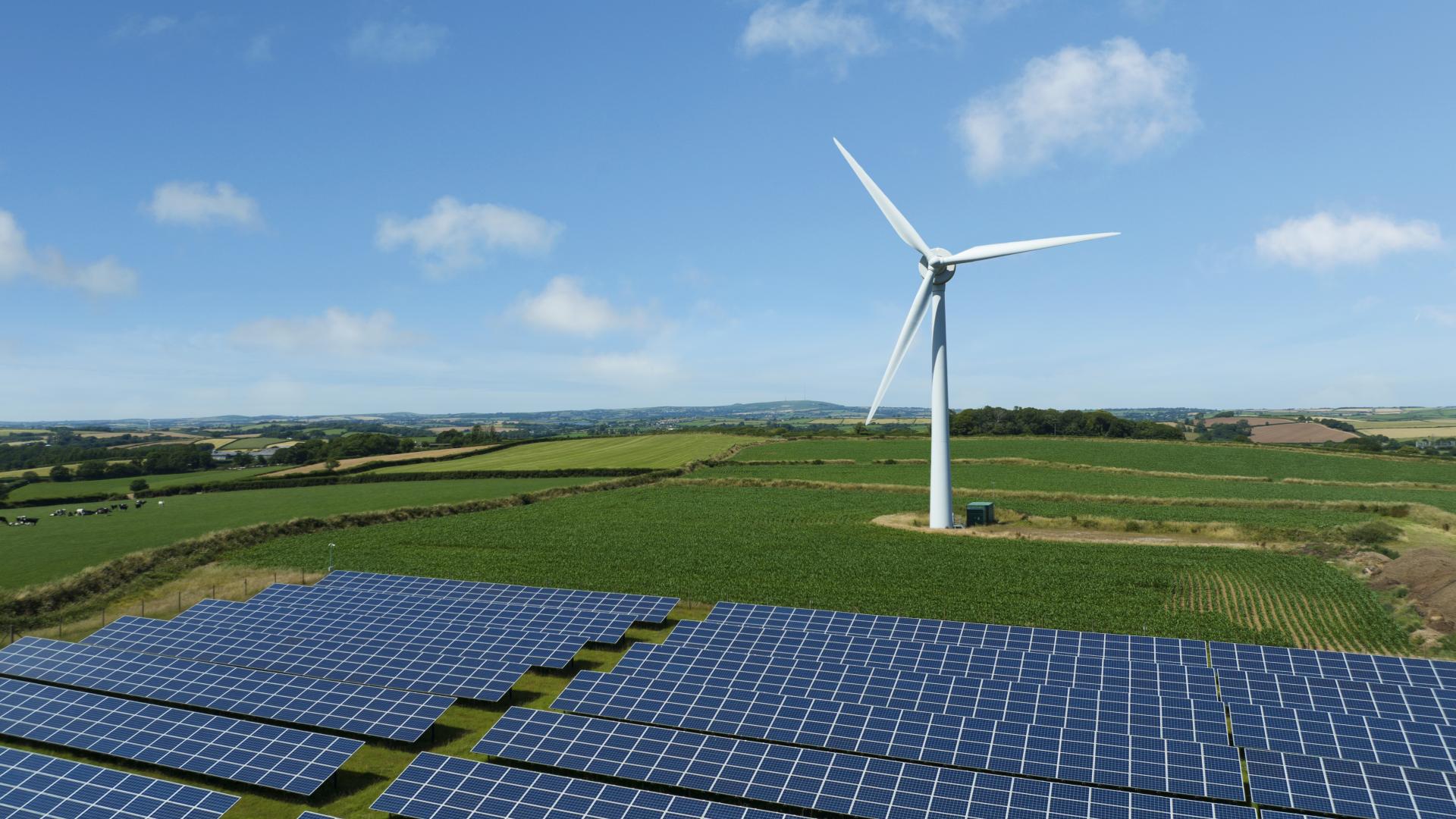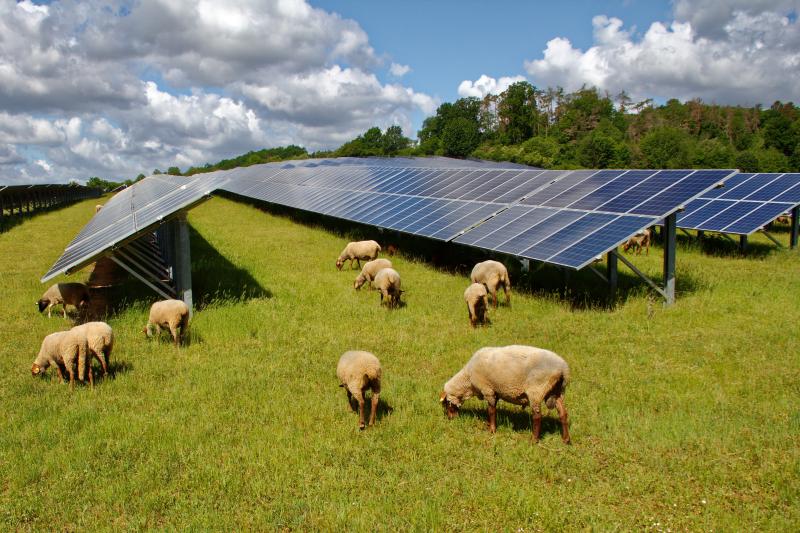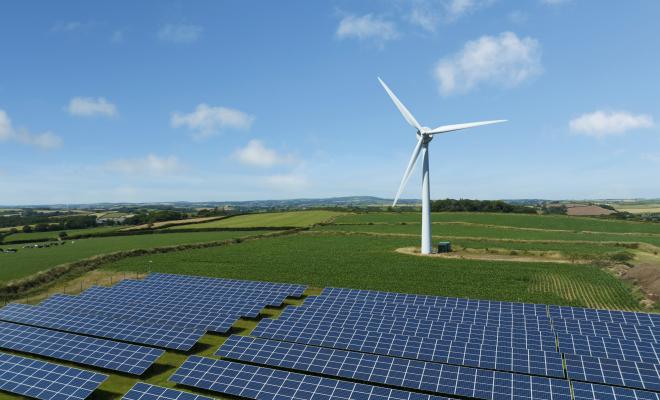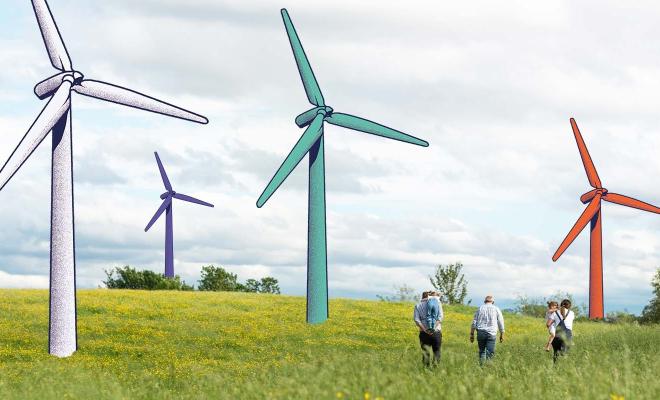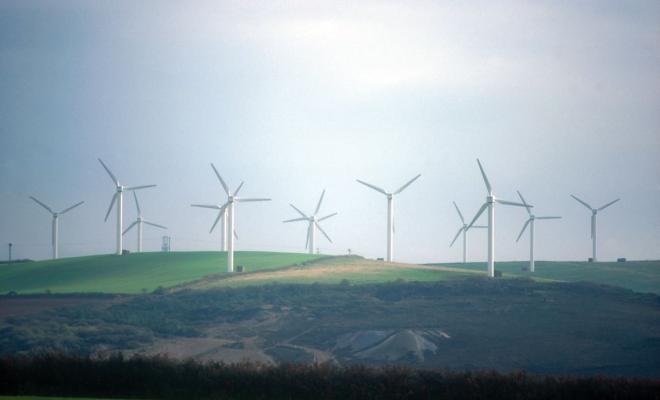09 Apr 2024
Wind and solar farms are by far the cheapest forms of electricity production. For example, electricity from gas-fired power stations is almost 3 times more expensive to produce. More renewable electricity production can therefore help lower energy bills. It will also reduce carbon emissions as it displaces gas-fired electricity and as transport and heating are electrified. Electrifying heating and transport are essential for meeting the UK’s international commitment to cut carbon emissions by 68% by 2030.
The UK therefore needs a lot more renewable electricity. A future scenario for Great Britain (GB)1 developed by the National Grid suggests that we need up to double current levels by 2030.2 This means more than 10 GW of new renewable capacity being developed each year, and potentially more if the transition to electric heating and electric vehicles is sped up (average new capacity over the past 10 years has been less than 4 GW3 ).
A recent report by respected energy consultants has said that the slow build rate for low-carbon power over recent years now means an average new capacity of 15.5 GW is needed each year until 2035. To contextualise this, one of the biggest existing onshore wind farms is the Clyde Wind Farm in Scotland, which has 206 turbines with an installed capacity of 0.5 GW.
How did we identify suitable locations for renewable energy?
Offshore wind farms will be the backbone of GB’s future electricity production. But they take time to build. 10+ years is typical, although that could be reduced to 5-6 years according to the government’s Offshore Wind Champion. At the moment, the UK is off-track to meet its target to more than triple offshore wind by 2030, not least because of the government’s bungling of a previous auction which led to no new projects being put forward.
The offshore wind industry is battling strong headwinds from the rising costs of materials and higher borrowing costs. Fortunately, the government learnt from its mistake and has increased the maximum price it will pay in future auctions for renewable energy generation, but it’s still missing out on securing the scale of new build needed.
It’s not too late to get offshore wind growth back on track, but if the UK is to produce the cheap, green electricity it needs by 2030, we need to see lots more onshore renewable energy as well, and quickly. For reasons of speed, most of this will need to be built near to where the electricity grid already has spare capacity.
We urgently need our political leaders to pull their heads out of the sand and produce a strong, ambitious and fair new climate plan that lifts the barriers to onshore wind and solar power and secures investment in the infrastructure needed to support the switch to renewables.
Tony Bosworth, climate campaigner at Friends of the Earth
Onshore renewable energy is fast to build, taking as little as 1 year if planning and grid constraints are resolved. But development is being held back, particularly in England. In addition to a confused national policy position for onshore wind, most local authorities haven’t identified sites where renewables could go.
Developments are also held up by long delays in hooking up to an antiquated electricity grid that’s not fit for purpose. The energy regulator Ofgem said nearly half of projects must wait 5 years for a connection to the grid, and some may have to wait 10 years or more. Ofgem and the government have now published an action plan which aims to drastically reduce this waiting time. The trade association RenewableUK has also identified further changes needed to upgrade the grid to 21st-century standards.
Friends of the Earth has worked with the UKRI Centre for Doctoral Training in Environmental Intelligence based at the University of Exeter to identify the land that could be most suitable for new onshore renewable energy. To do this, we identified the land that is less suitable for onshore wind or solar farms, although developments may still be possible in these areas with care (eg fewer turbines). See our methodology for more detailed information on land we’ve excluded.
We’ve been deliberately conservative in this analysis, for example we excluded:
- Solar farms on higher grade agriculture land. In practice, some land that’s designated as “excellent” or “very good” may be degraded and is therefore suitable for development. While food security is important, losing 1% of this land to solar wouldn’t make a significant difference. In addition, existing grid capacity for new renewables is often in areas of higher-grade agricultural land. If we’re to build enough renewable energy quickly enough, we’re going to have to use some of this land. Friends of the Earth will continue to support solar farms on higher grade agricultural land on a case-by-case basis (especially due to the temporary nature of such developments compared to say a house with a 100+ year lifespan), even though our preference is for these solar developments to be predominately on poorer quality agricultural land, in addition to utilising the potential for rooftop solar, solar carparks etc.
- Wind and solar farms in national parks and Areas of Outstanding Natural Beauty (AONBs). We’d support smaller developments in these areas if sensitively located. We also support the National Farmers’ Union and RenewableUK’s call for small turbines (ie less than 25 metres tall) to be granted planning permission (so-called “permitted development”) in such protected landscapes, subject to prior approval.
- Wind and solar farms close to sites of heritage. For both wind and solar we’ve added 1 km buffers around all Grades I and II* buildings, 2 km buffers around registered parks and gardens, and 500 metre buffers around scheduled monuments. In many cases smaller buffers may be appropriate.
- Small developments. We’ve excluded areas of land smaller than 1 hectare (2.5 acres) for solar farm developments and 5 hectares (12 acres) for wind farms. Smaller solar projects, single wind turbines or several small wind turbines may practically use areas smaller than this, but the electricity they produce will be more expensive.
- Rooftop solar. This analysis excluded an assessment of rooftop solar and the co-location of solar with car parks etc. It also excludes the future potential for agrivoltaics (co-locating solar and agricultural production). This was for practical reasons, but we recognise that these do have important contributions to make.
- Wind in areas of low wind speed. Some areas will be uneconomical for developing new wind farms because the wind speed is too low. Sites with wind speeds of less than 5 metres per second at 50 metres above ground have been excluded. The industry is likely to favour areas with the highest wind speeds.
For our calculations of energy generation potential, we also prioritised wind farms over solar farms where the land is suitable for both, so solar estimates are lower than they otherwise would be. We did this because, as we switch to electric heating, much of our electricity demand in the future will be in winter, and wind farms are obviously more productive than solar in winter. Increasingly however, wind and solar can be co-located on the same site, alongside energy storage, with careful design. It should also be noted that the land around wind and solar can be used for other purposes as well, for example farming around turbines and biodiversity gain or sheep grazing around solar panels.
On the other hand, there will be some areas we’ve identified as most suitable that may in practice not be suitable. For example, we haven’t been able to map unsuitable areas due to radar interference for aircraft or migratory routes for birds. In addition, important nature sites aren’t always well identified or officially designated in the UK, ie while European and nationally designated wildlife sites were automatically excluded, not all sites at the local and country level have statutory protection.
Any solar or onshore wind projects will need to investigate these issues before development can be granted. Experience shows that developments done well can enhance biodiversity, but without proper on-the-ground assessment by trained ecologists they can also be harmful. And not all the sites we’ve identified will be economically viable in practice, for example due to the costs of connecting to the grid.
We also haven’t considered the cumulative impact of development in a particular area. This is an important issue and requires further consideration. The Landscape Institute’s 2013 guidance may be a good starting point.
Where can England build new renewable energy?
Even with this conservative approach, we’ve identified 2,198 km2 of land most suitable in England for onshore wind (1.7% of all land) and 2,950 km2 for solar farms (2.3% of all land). This is equal to 2.9% of land overall due to much land being suitable for both, and has the theoretical potential to equal 95,542 GWh of onshore wind energy and 130,421 GWh of solar energy per year.
If this capacity was fully developed (although we’re not advocating for this due to the abundance of offshore energy potential also available) and if wind was prioritised above solar on sites that are suitable for both, this land would produce 13 times the current onshore wind and solar electricity generation across England. This is equivalent to more than 2.5 times the electricity currently consumed by homes4 (20% of total energy consumption). This shows that, alongside estimates for huge offshore wind potential5 , offshore solar and rooftop solar, the UK not only easily has the potential to meet its own energy needs, but it could also become a green energy superpower exporting clean, cheap, green electricity to other countries.
Our full data analysis and interactive map present our data analysis by local authority areas and English regions.
Table 1 shows the 10 local authority areas with the greatest total potential for renewable energy generation within 5 km proximity of an electricity grid substation. Table 2 shows 10 local authority areas with the greatest total potential for renewable energy generation without considering the proximity of the grid. Economics and speed are likely to favour development near the grid, but larger developments may still be economical at greater distances. In addition, some new grid lines are likely to be developed in future years.
There are several other estimates in the literature for the potential land available for onshore wind and solar farms, as reviewed by O’Callaghan et al from Oxford University in a recent study. The quantities differ significantly depending on the technical constraints and assumptions made (for example, regarding political and/ or social appetite).
Our analysis is only for England rather than all of GB and so it’s not directly comparable, but our figures appear conservative. The Oxford University study cites earlier research which estimates 18%-44% of land would be suitable for onshore wind, whereas the study itself uses a figure of 5%, which the researchers say is conservative. Our figure is 1.7% but excludes Scotland and Wales. For solar, our conservative estimate is 2.3% of land. The Oxford University study cites earlier work with estimates ranging from 0.2% to 11% of land. The Oxford University researchers chose to work with a figure of 2%.
Which policies can release England’s potential for renewables?
Friends of the Earth recommends the following policies and policy changes to rapidly grow onshore renewable energy in England:
- The de-facto planning policy ban on onshore wind needs removing in its entirety ie footnote 58 of the December 2023 National Planning Policy Framework (NPPF). Onshore wind in England is unfairly disadvantaged compared with most other forms of development. Wales and Scotland have a comparatively more positive approach for assessing schemes.
- “Great weight” should be apportioned to renewable energy developments within the NPPF/ future National Development Management Policies (NDMPs).
- The statutory pre-application requirement for more than 2 turbines/ any turbines with a hub height of over 15 metres should be scrapped, with best practice community engagement principles used instead.
- Local authorities in England should identify “suitable areas” for renewable energy in their Local Plan and/ or Local Area Energy Plan as soon as possible if they haven’t already. This should be done either through Supplementary Planning Documents (SPDs) until Levelling Up and Regeneration Act regulations come into play, or through Local Development Orders, Neighbourhood Development Orders or Community Right to Build Orders. The data analysis Friends of the Earth has carried out should assist them in identifying suitable areas.
- The UK government should publish a map of pre-assessed areas for wind and solar in England where applications proposed within these areas would benefit from a presumption in favour of development. This should be subject to site/ scheme-specific assessment in other areas.
- National Policy Statements EN-1 and EN-3 should be amended so that onshore wind projects over 50 MW are considered within the Nationally Significant Infrastructure Projects (NSIP) regime. This would ensure onshore wind is processed in the same way as other types of renewable energy infrastructures.
- The need for “compelling evidence” for solar farm proposals should be relaxed. This is currently required by the 2015 written ministerial statement for solar farm proposals on Best and Most Versatile (BMV) agricultural land (Grades 1-3a), but this should be relaxed due to the UK's updated 2050 net zero target, as well as the temporary nature and easy reversibility of such schemes should such land become required for food production in the future.
- The poor state of the electricity grid continues to hold back progress on onshore and offshore renewables, while the rules for getting grid access also need fixing. Developing a grid for the 21st century needs to be a top infrastructure priority, including through requiring the privatised network operators to publish much more data on current and future grid capacity.
- All renewable developments should be required to deliver biodiversity benefits greater than the 10% statutory minimum for Town and Country Planning Act applications. Solar Energy UK has published best practice guidelines which should be followed.
- Communities should be properly engaged and should benefit. Solar Energy UK is developing a best practice guide for community engagement. There are different models of community benefit, such as community ownership, opportunities to buy into the project (Ripple Energy is pioneering this approach in the UK) or residents benefiting from reduced energy costs (Octopus Energy is using this approach). The best approach to community benefit may differ from project to project, and it’s important to ensure that benefits don’t just accrue to those who can afford to buy into projects.
Methodology
There are different constraints to solar and onshore wind, so these are looked at separately. To identify constraints we drew on advice provided to Stroud Council by LUC and the Centre for Sustainable Energy and advice from our in-house planning expert.
After constraints were considered, we multiplied the potential land area for wind by 19.8 MW per km2 based on a 2021 study and for solar by 50 MW per km2 based on current practice. We then multiplied both by capacity factors (estimates of the proportion of time the technology will be producing energy over the course of a year) to arrive at an approximation of potential energy production. As stated earlier, where land has the potential for wind and solar we’ve prioritised wind. In practice, a choice might be made to use this land for solar instead or to co-locate wind and solar.
- 1Northern Ireland is on a separate electricity grid to the rest of the UK so is excluded here.
- 2National Grid Future Energy Scenarios. The “Leading the Way” scenario has 119 GW of renewable energy in 2030 compared with 55 GW in mid-2023. www.nationalgrideso.com/future-energy/future-energy-scenarios
- 3Using the National Grid Future Energy Scenarios identified above, and also the Climate Change Committee’s figures in its 2023 Progress Report. www.theccc.org.uk/publication/2023-progress-report-to-parliament/
- 4There’s a range of estimates for electricity use by homes, so 2.5 is likely to be an under-estimate. For example, if using Ofgem’s typical medium electricity consumption figures, the range is 2.2 to 3.3.
- 5A recent study by Oxford University suggested offshore wind could eventually produce over 2,000 TWh of electricity against a projected total need of 1,500 TWh. www.smithschool.ox.ac.uk/sites/default/files/2023-09/Could-Britains-energy-demand-be-met-entirely-by-wind-and-solar-SSEE-working-paper.pdf


